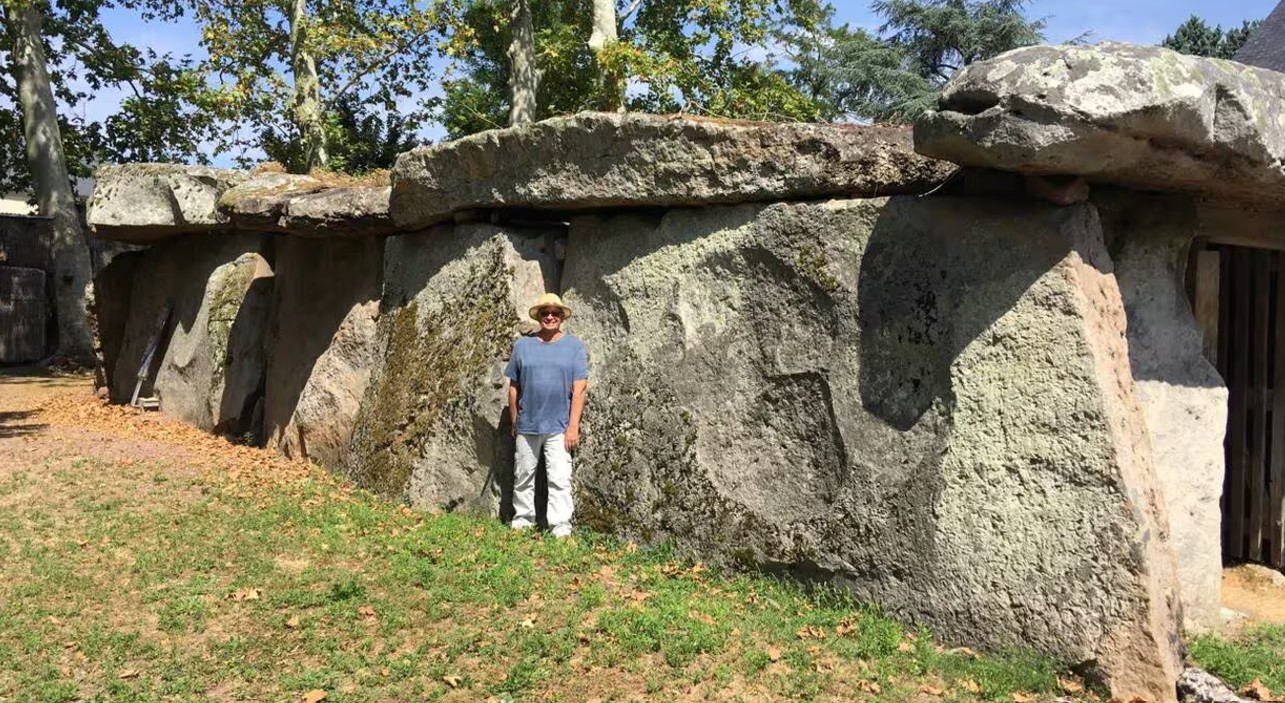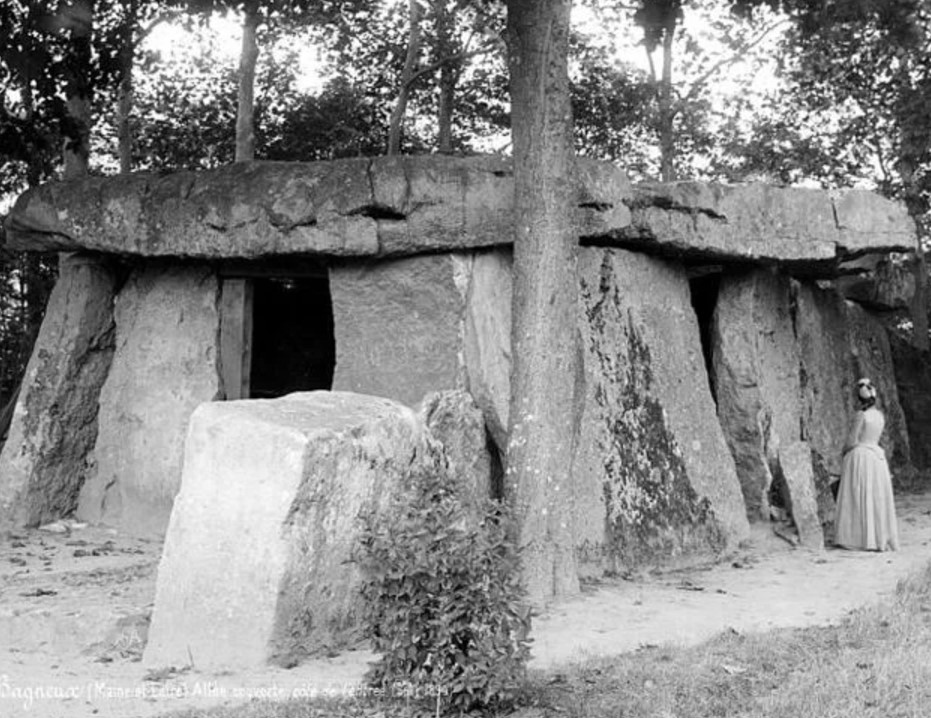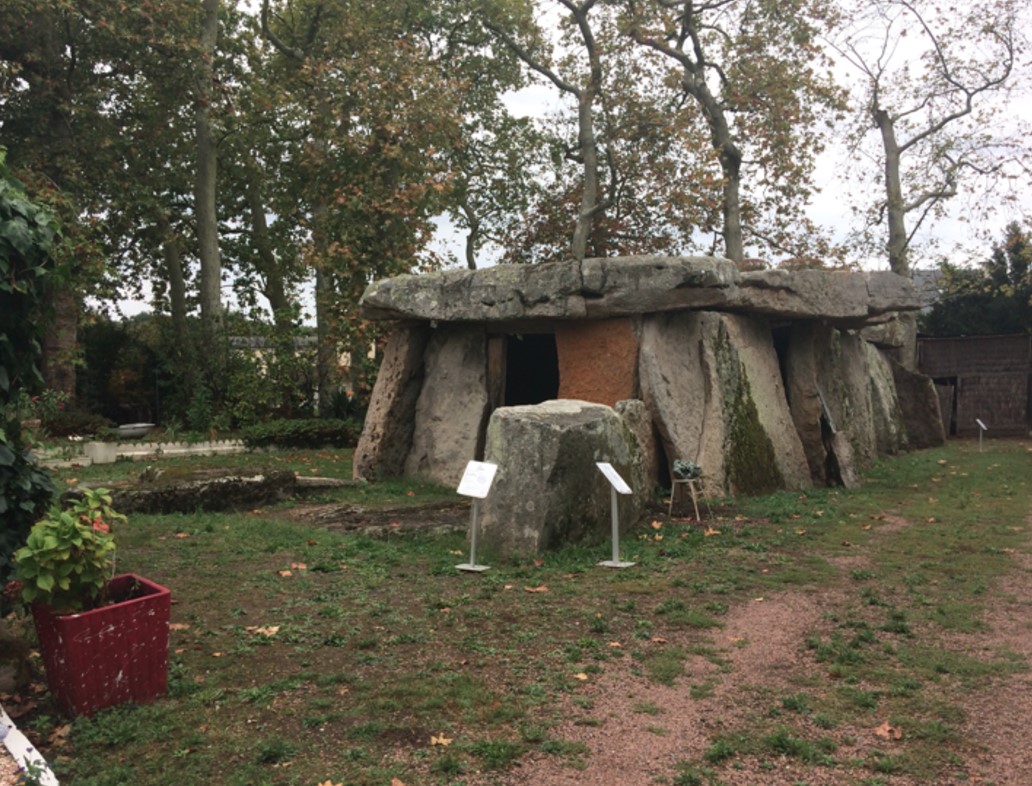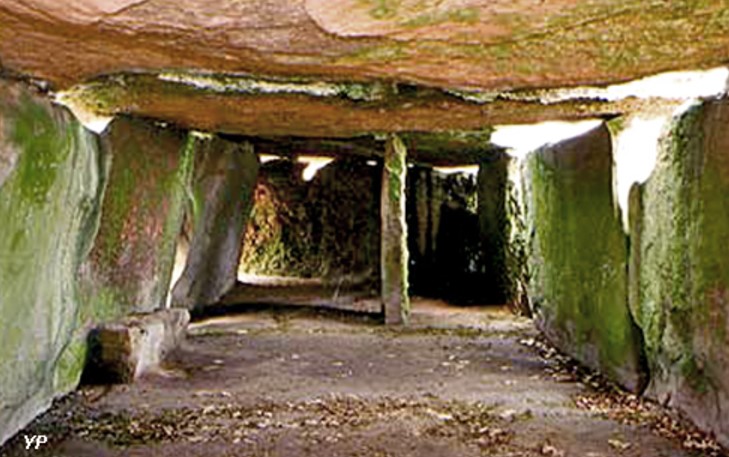The Dolmen de Bagneux, located near Saumur in the Loire Valley of France, is one of Europe’s most remarkable megalithic structures. Dating back to the Neolithic period, approximately 4000 to 3000 BC, this enormous tomb offers a glimpse into the lives, beliefs, and architectural prowess of prehistoric societies Join archeology.dulichvn.net to learn more about the mysteries of the world that have yet to be discovered.
1. Overview of the Dolmen de Bagneux
1.1. A Giant Among Dolmens
Measuring about 18.5 meters (61 feet) in length and over 4 meters (13 feet) in height, the Dolmen de Bagneux is one of the largest dolmen in Europe. Its massive stone slabs, some weighing several tons, highlight the extraordinary effort required to construct such a monument.

1.2. Location and Historical Context
Situated in the town of Bagneux near the Loire River, this dolmen lies at the heart of a region rich in Neolithic heritage. The site reflects the advanced social organization of the communities that flourished in prehistoric Europe.
See more: Phrygian Statue of the Goddess Cybele or Agdistis
1.3. Construction and Purpose
The tomb was built as a burial chamber, likely to honor high-status individuals or groups. Originally covered by an earthen mound, erosion over millennia has left the stone skeleton exposed, allowing us to marvel at its structure today.

2. Architectural Features of the Dolmen
2.1. The Long Rectangular Chamber
The dolmen consists of a long, rectangular chamber formed by upright stones called orthostats, topped by large capstones. This design reflects the ingenuity of Neolithic builders in creating durable structures with limited tools.

2.2. Monumental Stones
The massive stone slabs used in the dolmen’s construction were likely transported from nearby quarries, requiring significant labor and coordination. The precision in placing these stones suggests a deep understanding of balance and stability.
2.3. Erosion and Preservation
While the original earth mound has been lost, the exposed stones have stood the test of time. Efforts to preserve this dolmen have ensured its survival as a testament to Neolithic craftsmanship.
See more: Exploring the Temple of Hathor in Dendera, Egypt
3. Cultural and Ritual Significance
3.1. A Burial Site for the Elite
The size and complexity of the Dolmen de Bagneux indicate that it served as a burial site for prominent individuals. Its grandeur reflects the importance of honoring the dead within Neolithic societies.

3.2. Ritual and Spiritual Roles
Dolmens like this one were often central to religious or cultural rituals. Their alignment and design may have been influenced by celestial events, symbolizing a connection between the physical and spiritual worlds.
3.3. Markers of Territory
Beyond serving as burial chambers, dolmens were also likely territorial markers, asserting the presence and influence of the communities that built them.
4. The Legacy of the Dolmen de Bagneux
4.1. Insights into Neolithic Life
The Dolmen de Bagneux provides valuable insights into the societal structure, technological skills, and spiritual beliefs of Neolithic communities. Its construction reflects a high degree of collaboration and organization.

4.2. Questions That Remain
Despite extensive study, many mysteries persist about the dolmen. How did people of the Neolithic era transport and erect such massive stones with limited tools? What rituals were performed here, and how did they shape the culture of the time?
4.3. A Testament to Human Ingenuity
Today, the Dolmen de Bagneux stands as a monument to human creativity and resilience. It continues to captivate archaeologists, historians, and visitors from around the world, serving as a bridge to a distant past.
Conclusion
The Dolmen de Bagneux is more than a collection of ancient stones—it is a story of human ambition, innovation, and reverence for life and death. As one of Europe’s largest and most impressive monuments, it remains a symbol of the ingenuity and social complexity of Neolithic societies. While many questions about its origins and purpose remain unanswered, this extraordinary site continues to inspire awe and curiosity, inviting us to explore the rich tapestry of prehistoric Europe.

CÁC TIN KHÁC
Mark Twain & Olivia Langdon: A 36-Year Love Story Filled with Laughter and Devotion
The Tollund Man: A 2,400-Year-Old Mystery Preserved in a Danish Bog
Skara Brae: Scotland’s Hidden Neolithic Village
Porta Nigra: The Hidden Depths of Trier’s Iconic Roman Gate